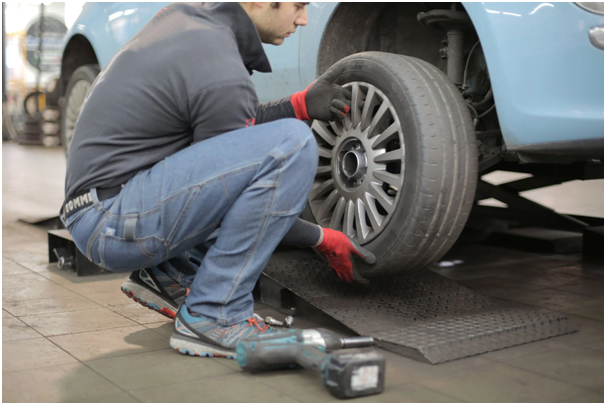Review Types and Features of Pneumatic Powered Drill

An Air Powered Drill or pneumatic drilling machine is used for drilling, placing, and countersinking holes of different diameters in a variety of parts from a variety of materials – wood, ferrous and nonferrous metals, stone, plastic, etc.
Pneumatic drill uses compressed air as the driving force.
Such a tool is mainly used in industrial production and construction in places where there is a pneumatic system (compressed air line).
All models of pneumatic drills have a similar structure and principle of operation and consist of the following nodes – rotary pneumatic motor, gearbox, and starting device. The main differences between the models of pneumatic drilling machines lie in their design, location of the axis of rotation of the drill against the pneumatic motor rotation axis, spindle speed, the diameter of the drill bit used, power, compressed air consumption, overall dimensions, and weight. Also, in existing models, there is a difference in the type of device for fixing the drill bit (Morse cone, cam chuck, etc.).
Types of pneumatic drills
All pneumatic drills are divided into angle drills, straight drills, and pistol drills.
- The first type is distinguished by its compact size and L-shaped form. Such drills are needed for drilling in places that are difficult to access. Such a tool is used in furniture production, construction;
- Straight pneumatic drills are similar to screwdrivers and are used for various works;
- A pistol pneumatic drill is a tool with a pistol design, where the axes of both the chuck and the motor coincide. Such a tool is very comfortable to work with and lies comfortably in hand. Some models of such tools may have additional side handles.
Features of pneumatic drills
Reverse. This is an essential system for each type of drill, thanks to which you can both twist and unscrew the elements of fasteners (changing the direction in which the chuck rotates).
There are professional and industrial pneumatic drills. If you do not intend to use the tool very often, you can safely buy a professional model. For continuous long-term work with constant high loads, you should buy a drill industrial type, which has an increased service life and excellent ergonomics.
Type and diameter of the chuck. A pneumatic drill, which is equipped with a simple cam chuck, can be used to work drills with a diameter not exceeding 13 mm. The chucks can be keyed or keyless (quick-clamping). Quick-change chucks to make it possible to quickly change the drill bit without using additional tools. There are also models of pneumatic drills in which the cam chuck can have a diameter of up to 16 mm. There are also special drills that have tapered tails. For such drills, you should buy a pneumatic drill with Morse taper. It is possible to buy pneumatic drills that have collet chucks, which are needed to use a drill of a particular size.
RPM. The choice of revolutions at which the motor shaft of a pneumatic drill depends on the material you are drilling and the diameter of the hole to be created. So, the softer the base material and the smaller the diameter of the hole, the higher the RPM. For example, when using a drill with a diameter of up to 6 mm, the number of revolutions will be 4000 rpm or more, from 6 to 8 mm – 2000-4000 rpm, up to 10 mm – 1000-2000 rpm, from 10 mm – 1000 rpm or less.
Today you can buy pneumatic drills, which have a system of switching the speed. They can be purchased at any Auto Body Tool Mart, for example, in DealerShop. If the model does not have such a system, you can use a special input regulator, which will allow you to regulate the speed.
It is worth noting that to work with screws, and various self-tapping screws, you should not use a pneumatic drill. To work with such elements of fasteners, it is recommended to use pneumatic screwdrivers, which are equipped with reliable friction clutches.


